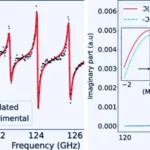Key Points
- Vortioxetine, an antidepressant, has shown potential in killing glioblastoma cells in lab settings.
- Pharmacoscopy was used to test hundreds of drugs on live glioblastoma tissues.
- Clinical trials are planned to test vortioxetine’s effectiveness on human patients further.
- Researchers urge caution, warning against self-medication before trials conclude.
Researchers at ETH Zurich have discovered that vortioxetine, an antidepressant, may offer a new treatment option for the aggressive brain tumor glioblastoma, which is currently incurable. The research, published in Nature Medicine, demonstrates that the drug, already approved by health authorities like the FDA and Swissmedic, can effectively kill glioblastoma cells in a laboratory setting.
Glioblastoma is a deadly form of brain cancer with limited treatment options. Patients usually undergo surgery, radiation, and chemotherapy, but the average survival time after diagnosis is only about 12 months. One of the key challenges is that many cancer drugs cannot cross the blood-brain barrier, which restricts their effectiveness in treating brain tumors. This limitation has driven researchers to find drugs that reach the brain and target the tumor cells directly.
The team, led by Professor Berend Snijder, used a drug screening platform called pharmacoscopy to test hundreds of neuroactive substances capable of crossing the blood-brain barrier. These substances included antidepressants, Parkinson’s medications, and antipsychotics. By applying the drugs to fresh tumor tissue from 40 glioblastoma patients, the researchers identified vortioxetine as the most effective antidepressant in suppressing tumor cell division.
Pharmacoscopy, a method developed by the ETH Zurich team, allows researchers to test numerous substances simultaneously on living cancer cells. Through imaging techniques and computer analysis, they determined which drugs had the most significant impact on the cancer cells. While this technique had previously been used for blood cancers, this study marks the first time it was applied to solid tumors like glioblastoma.
In addition to lab tests, the team also conducted trials on mice with glioblastoma, finding that vortioxetine worked well, especially when combined with standard treatments like surgery and chemotherapy.
The next step involves two clinical trials. One will investigate vortioxetine in combination with standard treatment for glioblastoma, while the other will personalize treatment based on each patient’s response, determined through the pharmacoscopy platform.
Though vortioxetine shows promise, researchers caution against its unsupervised use. Clinical trials are essential to determine the appropriate dosage and verify its effectiveness in humans.
[Journal Reference] Lee S, Weiss T, Bühler M, et al. High-throughput identification of repurposable neuroactive drugs with potent anti-glioblastoma activity. Nature Medicine (2024), doi: 10.1038/s41591’024 -03224-y










